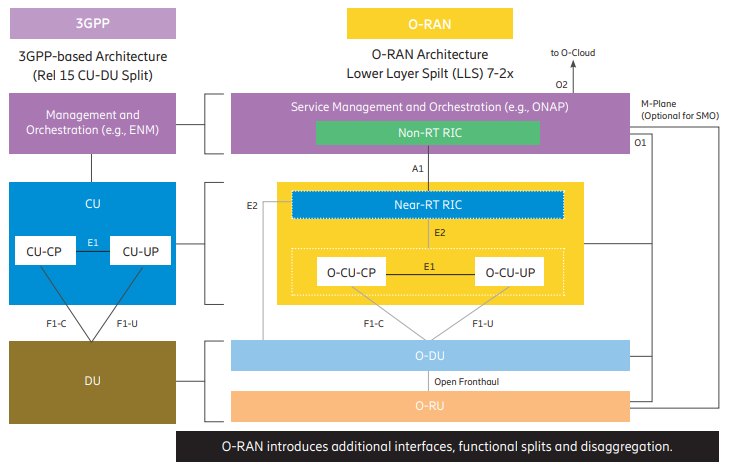Open RAN
Open RAN is the industry’s generic term for an open radio access network architecture. An Open RAN has open interoperable interfaces, RAN virtualization, and support for big data and AI-enabled RAN.
Providers deploying an Open RAN can choose between a 3GPP or O-RAN architecture.
vRAN
It refers to the virtualization of RAN functions, particularly the higher layer and lower layer function of the baseband unit.
3GPP Release 15 CU-DU split architecture facilitated this journey to begin by separating the centralized and distributed functions of RAN. With vRAN, 5G becomes software-defined and programmable, generating additional RAN architecture flexibility, platform harmonization, and operational simplification.
O-RAN
It refers to the Open RAN standardized by the O-RAN Alliance.
The O-RAN Alliance has four main objectives: Open Interfaces, Virtualization, Intelligence, and Interoperability.
O-RAN enables service providers to deploy radio units (RU) and distributed units (DU) from different vendors with a new Lower Layer Split (LLS) split, called Option 7-2x, transported over eCPRI protocol.

